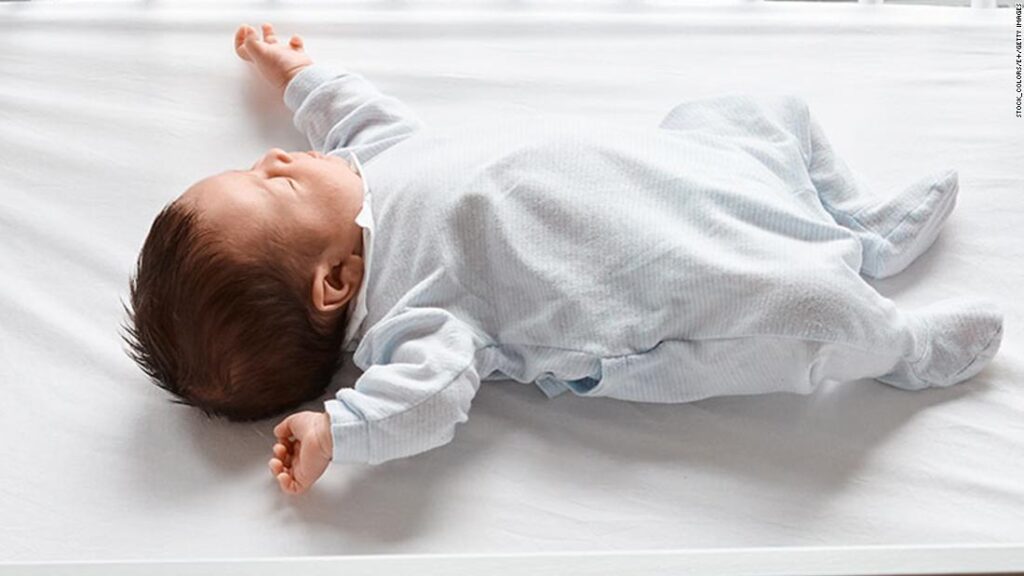“We know that many parents choose to share a bed with a child, for instance, perhaps to help with breastfeeding or because of a cultural preference or a belief that it is safe,” said Dr. Rebecca Carlin, who coauthored the guidelines and technical report from the AAP Task Force on Sudden Infant Death Syndrome and the AAP Committee on Fetus and Newborn, in a statement.
“The evidence is clear that (co-sleeping) significantly raises the risk of a baby’s injury or death,” said Carlin, an assistant professor of pediatrics at Columbia University Irving Medical Center. “For that reason AAP cannot support bed-sharing under any circumstances.”
It is one of a number of recommendations the AAP provided to pediatricians to help stem the tide of infant sleep deaths.
Some 3,500 infants, many of whom are in socially disadvantaged communities, die from sleep-related infant deaths in the United States each year, the AAP said.
“The rate of sudden unexpected infant deaths (SUIDs) among Black and American Indian/Alaska Native infants was more than double and almost triple, respectively, that of white infants (85 per 100 000 live births) in 2010-2013,” the AAP noted in a statement.
“We’ve made great strides in learning what keeps infants safe during sleep but much work still needs to be done,” Dr. Rachel Moon, lead author of the guidelines and professor of pediatrics at the University of Virginia, said in a statement.
Sleep in same room, separate bed
While the AAP strongly advises against co-sleeping, its updated guidelines say babies should sleep in the same room with their parents for at least six months on a separate sleep surface with a firm, flat surface.
Parents should not use products for sleep that aren’t specifically marketed for sleep, the AAP said.
Other sleep environments can also put infants at risk. Resting with a baby on a couch, armchair or cushion and falling asleep raises the risk of infant death by 67%, the AAP noted. If the baby is pre-term, born with a low birth weight or is under 4 months old, the risk of death while co-sleeping on a bed, couch or other spot increases five to 10 times, the academy said.
Bare is best
Parents should always put babies to sleep alone on their backs on a flat, firm mattress covered in a snug, fitted sheet, according to the AAP. Avoid all extras in the crib, including soft toys, blankets, pillows, soft bedding, sleep positioners or crib bumpers, as babies can become trapped by such items and suffocate.
These products are generally used by well-meaning parents, who only want the best for their child and believe they are doing the right thing, said psychologist Carol Pollack-Nelson, a former CPSC staffer who now studies how people use consumer products.
“When they see their little peanut crying and having trouble settling into the big crib, they think, ‘Well, I need to cozy up the crib. My baby just came through the womb, you know.’ So intuitively, that’s what makes sense,” Pollack-Nelson said.
But babies do not need any of those cushioned products to be warm and comfortable, Jacobson said. “Instead of a sheet or blanket, place baby in a swaddle sack or wearable blanket.”
In fact, putting excessive clothing or blankets on an infant, especially in a warm room, can be associated with an increased risk for SIDS, Jacobson said.
“Hats and any other head covering should be removed before placing your baby down to sleep,” she said, adding that babies only need one more layer than an adult would typically wear.
Since cribs slats are now regulated to be close together, bumpers are no longer needed, the AAP said. “Stores now sell mesh bumpers and vertical crib liners. But even these can get loose and become a strangulation risk. Babies can also get trapped between them and the crib mattress,” the academy warned.
Less than a 10% incline allowed
The new CPSC regulations will ban all products marketed for infant sleep that have more than a 10% incline. Those include inclined sleepers and sleep positioners — which are also called baby nests, docks, pods, loungers, rockers, and nappers, the AAP said. A number of the products may not be sold as sleep aids, but babies often fall asleep while using them.
Many such products on the market have up to a 30% incline, which can be dangerous because babies’ heads fall forward during sleep, the APP said. This chin-to-chest position can restrict their airway, causing suffocation. Infants can also roll out of the devices and become trapped under them, the AAP warned.
Car seats, strollers, swings, infant carriers and infant slings can also obstruct a baby’s airways, the AAP said. So when baby falls asleep in them — which is inevitable — parents should move the child to lie on their back on a flat, firm surface.
Avoid commercial devices sold for SIDS
In its new guidance, the AAP also warns against the use of commercial devices that claim to reduce the risk of SIDS or other sleep-related issues, including wearable monitors.
In addition, do not use home cardiorespiratory monitors — devices that monitor baby’s heart rate and oxygen levels — as a way to reduce the risk of SIDS, because there is no evidence that they work, Jacobson said.
“Using products claiming to increase sleep safety may create a false sense of security” for parents that “could result in reducing infant safe sleep practices,” she said.

